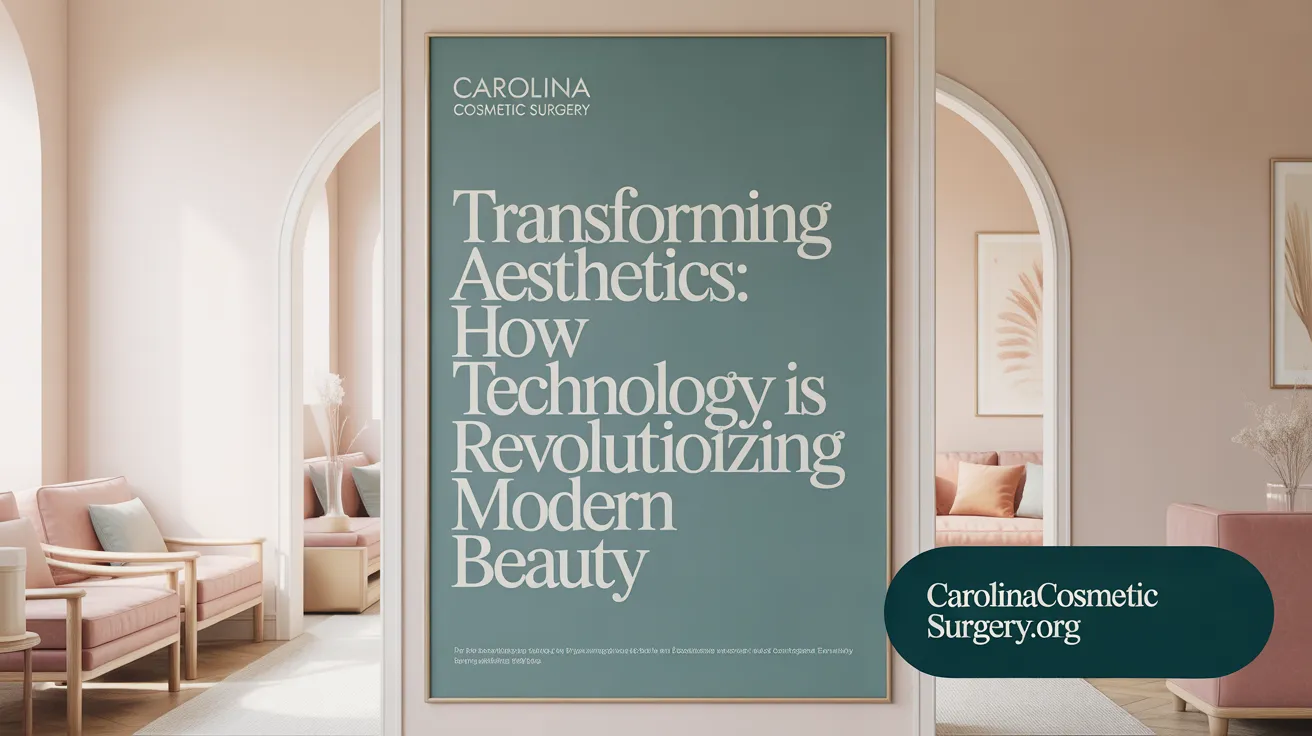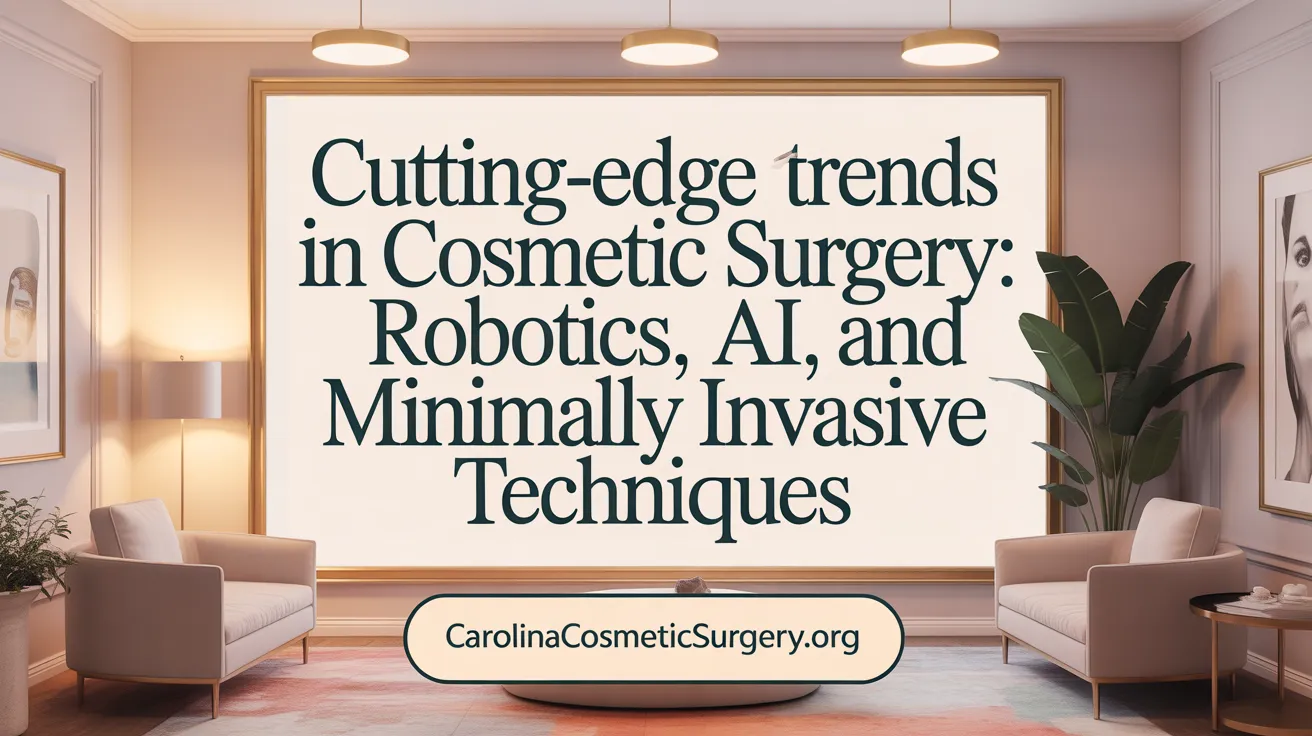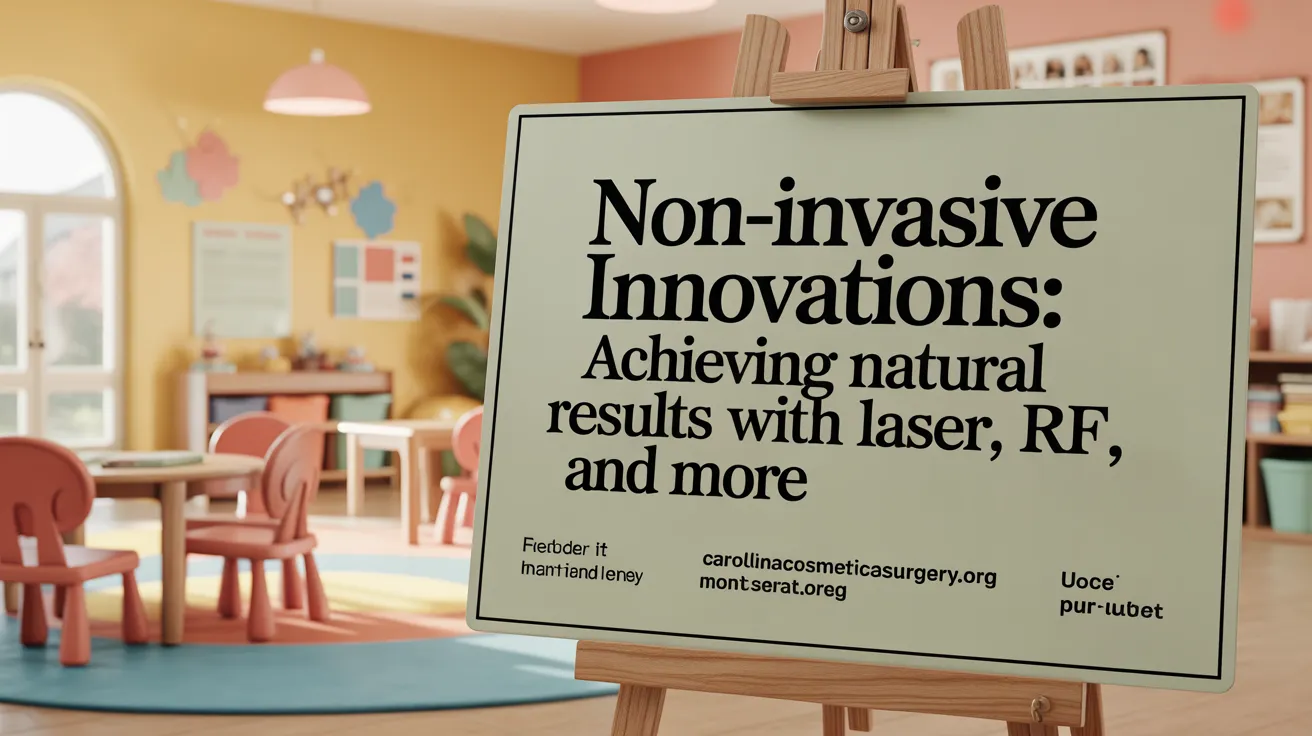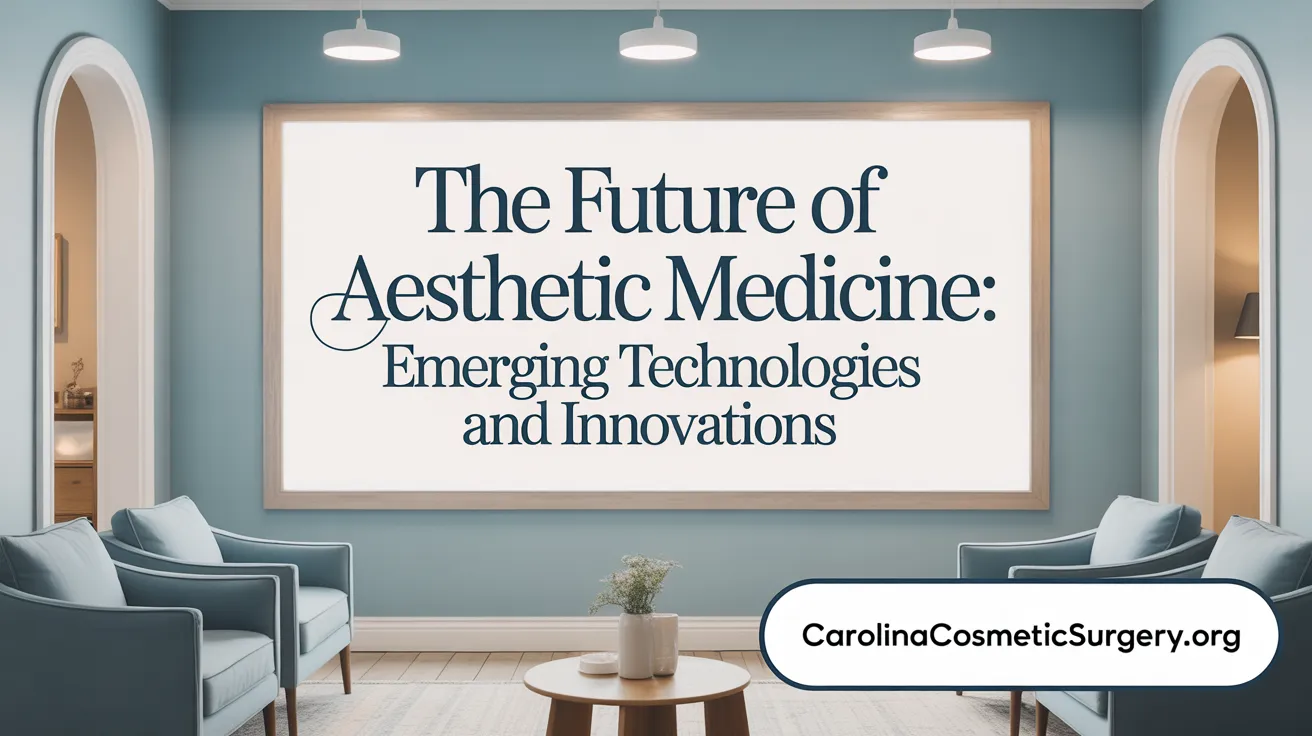A New Era in Aesthetic Enhancement
Modern cosmetic surgery has been transformed by rapid technological advancements, blending artistry with scientific precision to meet the evolving demands of patients seeking natural, safe, and effective aesthetic improvements. This article explores how cutting-edge technologies, from artificial intelligence to minimally invasive procedures, are shaping the future of cosmetic surgery — enhancing outcomes, personalizing care, and expanding access globally.
<!-- VIDEO:eyJsaW5rIjoiaHR0cHM6Ly93d3cueW91dHViZS5jb20vd2F0Y2g/dj13cGRLaDNIc2dXMCIsImltYWdlVXJsIjoiZGF0YTppbWFnZS9qcGVnO2Jhc2U2NCwvOWovNEFBUVNrWkpSZ0FCQVFBQUFRQUJBQUQvMndDRUFBa0dCd2dIQmdrSUJ3Z0tDZ2tMRFJZUERRd01EUnNVRlJBV0lCMGlJaUFkSHg4a0tEUXNKQ1l4Sng4ZkxUMHRNVFUzT2pvNkl5cy9SRDg0UXpRNU9qY0JDZ29LRFF3TkdnOFBHamNsSHlVM056YzNOemMzTnpjM056YzNOemMzTnpjM056YzNOemMzTnpjM056YzNOemMzTnpjM056YzNOemMzTnpjM056YzNOLy9BQUJFSUFGTUFsQU1CSWdBQ0VRRURFUUgveEFBY0FBQUJCQU1CQUFBQUFBQUFBQUFBQUFBQUF3UUZCZ0VDQndqL3hBQTlFQUFDQVFNREFnVUJCQWdDQ3dBQUFBQUJBZ01BQkJFRkVpRUdNUk1pUVZGaEZBZUJrYUVqTWpOQ1VySEIwUlZ4RmlRNFltTnlrcUxoOFBIL3hBQVpBUUFEQVFFQkFBQUFBQUFBQUFBQUFBQUFBUUlEQkFYL3hBQWdFUUVBQXdBREFRQUNBd0FBQUFBQUFBQUFBUUlSQXlFeEVpSlJCQk5CLzlvQURBTUJBQUlSQXhFQVB3RHRWVVQ3WnRMK3U2VFc1RnpMRTFwT2hWVkFLdVhZSjV1UFRPY2lyM1RMWHRPajFmUkw3VDVoNUxpQmt5RGdnNDRQM0hCcTVSQ1A2SDZkbTZZMEZOTm52MnZHRGw5KzBxcWcvdXFNbkE3bnYzSnFEKzBEcSsxMHE4dGROdE9vQlk2a1Q1NEJiZUtwVmh3WE9NcWZiQnp6eU1jamZwbnFtKzFUb1hUYmhBZzFpNW1GZ0M0eW9sR1FaQ1BVQkZMNDljWXFrZmJKMHpOcDk1cEdwMjNodGJxUEEzc2N6U1RFczVkejY1L0xIcFV6MHFJVkc2NnQxaUxWN21hS1NPUkpuWEJZRnlRQmpKWnZON25IdVR4elVsWmRZVHVjYWhDSVFqWk9Wd1grQjhVakNrMWtzTWNZVkpHSTM0UVk5K2MvaDkxTzlRMHVXK0R6Q1ltQmYyMEVpS3pSbjRPTWxUNmVvclArNnMrdDU0YlJrL3RJMmZVc1UycHh6d1hvU1Jsd0FDUjVnUVFQOCtUWFhlbDliVFc5UExGaytwaU8yVlZJKzQ0K2Y2R3ZNMTlwRFJObTJrUm1CL1VEZC94cXgvWmYxQXVqZGFXeHZ0MkxzZlN5U09jRmM0eG43d1B4cmI3aThkTUxVbXM5dlJsRlpZYzFpaUV5S0tLS1pDaWlpZ0NpaWlnQ2lpaWdDaWlpZ0NtSFVlcExwR2czdDh4VUdPSStHR09BWFBDalB5eEFyYldOV3ROR3RoTmR2eTNDUnIrczUrUDcxem5xSHFpZlZ4NGNxSXNDTjRpd3I4ZXBQcWU5VlNrMzhQY1BlaGJYNkcxME8xdUpVWjdWcnE5dUdIbVZUdDhOZk1PTTdYSi9HblBYVThXdHoya1Z2R1o0cmJNbVFwSTNuK3cvblZMczcweXRKSmF2TEV5UHRaWHhsVC9VVkl0UEZmUWxIaldHNmo3N2VNbjNVLzByUCtWeFhpdXgyMjRKcjlkb2k4RHczVGIyWkI2b1JpbGRLWXo2Z3VOMnhjK0lWL2g5dnZwbEhxVnd1cXhXdHpQSTZNU0I0aDNad0R4elZoVFVDaUtxcURIR2NNb0dPUGNmTmN2RncvWGJvNWVXYTlLdHJPaVBIZlpzMmRvWkIrekE1emtjVmNJdExzTlA2R3VkVFQ2V1BYTE9TS2Y2bDFERkhWc29ueWRweGoxeVBpbGJZWEZ6Y3Bid2haV2xPRTJvQXgrY2lvMzdZOU9uWFV0QjA2T0c2R2tiTXN0dU9IazNlZjQzN2UyZmMvTmRQempsbTIrcng5bnZXMFBXRmpNR2c4Qy90Tm91RVU1UTVINnluMnlEeDNHUHZxMlZUYmRvdWw5Q2svd0hUcG9yUzF0WnBuZ21nWk43QmN4K1krWm5ZNEhyNjlzQ2xqcnZVR3kzVk5KVnpOY3VpemZUeW9oakFURzVENW95U3pnTTNINlBPUE1CVDFFclpSVU5wRjlxZDNxTjJsN1pyQmFwdThCakd5c2NTdWd5U2NIS3FHNHhnTVBlb3M2cjFCTEpyRExZWE1FVDJ4T21ib1ZPSEJLNU9DVGx0eXR0WURBQjQ0TlBTeGJhS2pOU20xYUc4MDlOT3RiZWUzZWJiZVNTekZHalRhZVFOcHp6ajhoMk9RMDZndXI2TytzN2EzZTh0N2FaSkM5emFXdmpzSlFWQ0lRVllLcEJZa2tmdTR5UFUwSjZpcXEycTY1YlQ2azcya2sxdnZZV3VMVm1aQ0pGaUdRTWJrUG1rT09jYzhnakNmOEFpL1VMcExMOUdZeU5MaG1FSXMzWWlaM1lQZzU1S0tBZkQ3ODBhTVc2aXFXOXgxTmMyVUVPbXRkcE84czdMYzNNU0psRkFFZThHSWJRV2JPM2J1d3B3ZldweXhpMUU2OWV2UGV6bXhqU01SUUdGRlF1UVN4RGJkeEE4dnIzSnpuME5HSmlpaWltVGpGL3FOeHFsNDF6ZFNGM1kvY0I3RDJGTlpXM01TaWphckEvM0g1MXBFQ1NPUUtqdFN2bnRiMWtrdGYwQkFERk01N2Uvd0FWNkZZeEJXSjF0OVg4aHhIT05oSCs4TzM1VTZ1amhzaGp1OUNEVloxNmNoTGU1dDVTVThRZWRlT2UzUHNlUlRuU05Sa3ZOSlZwbUx5eHZ0Wm03bkZWRVJQcFQ0V3ZKWkJOSExkSVpvbzJHSlU0ZFI3SEhldWsyblF6M2NNRjFwdXJSeVdWd2l5SThzZm5Da1pIYmc5L2lxRER0TndFWTRWL2YySXJvLzJiNi9CRFpRYU5jZ1FzQ3doT2VDY2tsZmprOFZqemNXVStxUWRiL2xrckwwLzA5YmFJck1zalQzRERCbFlZd1BaUjZDcFdSVWtLK0lpdnRPNWR3emcrNCthM0lvQXJoYXRUejNvcGxxbXRhWHBEUnJxZDlCYW1RRms4WjlvSUdBVG4wQXlNbjVweEJkMjl4SmNKRktyTmJTQ0tVZndPVlZzZjlMS2Z2cDZNSzB4MXU3dU5QMGk3dkxTMStxbWdpYVJZTjIzeE1ja0E0UE9PMU83aWFHM2lrbW5sU09PSkM3czV3RlVkeWZpdEV1WVpKV2lWd3pDTlpEeHh0T2NIUGIwTkdsaXYvd0NsZ3VJOVV1ZExzbXZyU3hzWTdoV2hiTFR5T3BjUnFNZndiRG5uOVljVTc2VTF4dGVzSkxoellaU1h3LzhBVXJvekwyQjgyNUZLdHpqYVJuaXRiYlJORjZmNmV1N1NGbXM5T1l2TExJczdJVjNlb2NFRVlHQU1Ic0FLMjZhczlMdHJlZTgweTdsdS9ySDNUWFUwNWtlUW9ObUNUL0R0eGoweHpTQ2Jvckc1Um5KSEhmbnRSdUh1UGJ2VkV6UldOeTV4a1ovem9CQkdRY2o0b0RORkZGQWNJdHMrVjVDTW5HRkhZQ2tyaEJkaVJWY3EyNDRJcEQ2Z3FETDN3ZVB1cUd1cnE1dFpWa0RIYmtrRlJ3YTlHck5tU0JuRnhaWEJEQ1FlVWtZMnNPeEgzMHo2ZGRsc1p4akdKeng3VS9lK3R0UWpCVjFTNVhuazR6VEt3d24xZ1g5NmN2eDg0TlY0UDhUZGxNakJTeHlVWUQ4NmxZVGk3dENyQlFibU1rZzRLNVlaL21hckZwTnNsSUhZamtlL3IvT3B5TStKY1cwV2VHbWpUL3UvODFWWi9HVVdqdUhvVWpOQUZab3J4dGRTQjEvcGkzMTNVWUo3eWVZV3lXazlyTEJFN0o0eXl0R1NDeWtIYmhDQ1BYUHhVYnJuUmJhckZmd2k4Z1NLOHZqZE5ITGFDUlZIMHl3Z0RrWUlLN3NqSHRWcm11RmlIQUxIMkZWaTcrMGZwYXhsTU43cTBNY2l0dFlJR2tDbjVLZ2lneGM5SGZVM3Q3UExkUkZMdlRtc3BGTnR1WnNvcTdpek1lMjNPQmdIUE9TTTBuUDBiNDF0TkUxemJ4K0xZMmxyNGNWcHRoL1FTTStDbTdtTnQyMHBudG5ubXJOcG1vMldxMmFYbW0zVU4xYnYrckxDNFpUVGswd2hadEgzOU9uU2dMRk14YkFFdE1RTHpuaUxkd1BnTjk5VjYvNkp2cnpTSUxOOWN6T3R0ZDJzazAwRHlneHo3U1F1NlF0NWRpZ0ZtYmpOWGdpdGFyRXlxbXI5SkpkUTYxSkdzTTExcU43QmM0a1VCU3NZaUFqZk9RNjVqWTQ0enV4eDNxT2g2QWFYVDlLaXVyaUNON09XZVJvVWkzUnI0czNpalpncnRkY0FCaDduaXI1UlJoYXFlcGRMT3RocWphVVlsMVM5dmhkeDNSWGFZbUJHMG52a0tOd3g2aGoyelZrMCt6aDA2d3Q3RzFUWkJiUkxGR3ZzcWpBL2xUaWlqQm9vb29wazgzeU9ERTIwakE5dmVvcTcxRjREc3R5ZDU5QWNmalRzdUJBNHoyR2FaaXk0RnhNeXFvNTgzclhvVmxtVWcwYWZVZE8rcG5rQzNMaytGaFJrL0RIL0FOeFc5aG91cFF4dThxUjRKeWYwbmVsVzFsMWpTS0JWUkZQQko1K2FmNmZxRzlkbzlTTWduUHJWN3ZvbnBGejJOM0FCT0lpTnA1NUZTOEVVNWhqdW9DdTVIV1JVUGNrZi9LenFsNWIyNll1V1Z2VVJnY21vbUcvdTcyZElvcERGRm5BU1BpcDNEelhvS0RxTVgrbndTV2NUcGNTb0M2eUlSNFI5UnozcHpwMXM2Z3lTc3hKNVptUGVvem82MlpyQzNrbk81MWpDa251Y2U5Tyt2SG5nNk4xWjdUSWxGczNiMFg5NzhzMTVFeE91alZSNnM2cGJWbzR0SDBXT2VPMXY3Mk94YlV4NVV5ekFNcWUvSHI3VTd1OVFYUjU1T2t1aE9tMXVyNkJWV2VhWk50dEJ1VU1ESTU1ZGlHQng2NSs2a3Vwa3RMYlFlaDVyWmtUVDROUnRKR216aEZYR2R6TjJIZkpKcGVEVE5RMXJxcnFxQzIxaVN3MDFycUR4bXN3QlBLVGF4WUN5SElSY2VvR1Q3aXFKWDlNNk4wSFQ5U2swM1ZldFo3YlhiMXpLOXJwZHlMU0pIUDhBQ2dHTTg4WjVQdFZsMEMvMWZwenFxRHBmWDc1dFJ0YjJKcE5NdnBGeEtTbkxSeWU1QTV6L0FINHI4K24yR2pOUDBuMURvTWVzYVZCYnJkblViTzJ4UEVyc3lCNVZIbVp2S2N5SnpqdUthM1ZsY2RQYXQwdHJnMXlYV2Vrb2JvaTNsZkRTMnZpcVVHNS8za3pqMnhqR0tBN0kxSm52U2hwTTk2cUV5S0tLS3BJb29vb0Fvb29vRHl4TXhDTVFTQ00xSFN6eXlEYzhqTWZjbk5ab3J1aEVCU1NNa210VGN6UVB2aWtaR1hrRUdpaW1ja3hJODAyNlZ5N0U1Sko3MU1hUVN0MUhqamtVVVZOamVoZWpHWnJPTEp6NWFzYzBhU28wVXFxOGJxVlpXR1F3UGNHaWl2UHQ2MGh6SDdLYnVlYSsxYlJKMzhYVFlBM2gyOGdES3VYSUk1NXg4ZHFkNldpNkI5cURhSnBDaTEweTV0ZkhsdGtHVkxnWUJHZjFlT01EQW9vcEdpZWp0VnZkVjZ2NjNrMUNjek5iMmh0NGp0QTJ4cXo0WGdmSi9HbXVvLzdPRVBBL1lSK24vSG9vb0RzTWY3SlArVWZ5ckI3MW1pcWhFc1VVVVZSQ2lpaWdDaWlpZ1AvWiIsInRpdGxlIjoiVGhlIEZ1dHVyZSBvZiBQbGFzdGljIFN1cmdlcnk6IEhvdyBBSSBhbmQgT3BlbkFJIFRvb2xzIExpa2UgLi4uIiwic25pcHBldCI6IkluIHRoaXMgdmlkZW8sIERyLiBKb25hdGhhbiBaZWxrZW4sIGEgYm9hcmQtY2VydGlmaWVkIHBsYXN0aWMgc3VyZ2VvbiBpbiBOZXdwb3J0IEJlYWNoLCBDYWxpZm9ybmlhLCBkZWx2ZXMgaW50byB0aGUgY2FwdGl2YXRpbmcgYW5kIHJhcGlkbHkgLi4uIn0= -->Understanding the Role and Goals of Cosmetic Surgery in Contemporary Practice

What is the role of cosmetic surgery?
Cosmetic surgery's main purpose is to improve a person's appearance and enhance self-esteem through altering specific facial or body features. It addresses aesthetic concerns such as wrinkles, scars, or disproportions, and can also correct deformities or functional issues in some cases.
Advancements in technology have expanded the options available, making procedures more precise and personalized. Today, plastic surgeons utilize tools like 3D imaging, computer-assisted planning, and robotic systems to achieve natural-looking results.
Preoperative planning involves detailed consultations, medical assessments, and thorough discussions of patient goals, risks, and expectations. Postoperative care focuses on recovery management, swelling reduction, and follow-up evaluations to ensure optimal results.
Ultimately, the goal of cosmetic surgery is to boost confidence and satisfaction, providing both aesthetic improvements and psychological benefits such as increased self-esteem and well-being.
How does AI influence preoperative and postoperative stages?
Artificial intelligence enhances plastic surgery from initial consultation to recovery. In the preoperative phase, AI-driven 3D imaging and simulation tools allow both surgeon and patient to visualize potential outcomes accurately, improving communication and setting realistic expectations.
AI algorithms analyze large datasets to predict possible surgical complications and suggest personalized treatment plans. For example, machine learning models can assess facial symmetry, aging patterns, and skin conditions to tailor interventions.
Post-surgery, AI assists in monitoring recovery through wearables and telemedicine platforms. These tools enable remote assessment of healing progress, early detection of complications, and personalized follow-up instructions.
What are current AI applications and future prospects?
Currently, AI applications include chatbots for patient inquiries, diagnostic tools analyzing imaging such as CT scans and dermatological photos, and virtual assistants like ChatGPT providing preoperative instructions.
Emerging uses involve robotic-assisted surgeries, automated tissue engineering, and intraoperative decision support through augmented reality (AR) and virtual reality (VR). These technologies aim to increase surgical precision, reduce risks, and minimize recovery times.
The future of AI in plastic surgery points toward more autonomous robotic procedures, smarter surgical planning, and personalized regenerative treatments utilizing bioprinting and gene therapy.
How does technology improve patient experience and practice efficiency?
Advanced devices such as fractional lasers, RF microneedling, and cryolipolysis allow for minimally invasive procedures with reduced scarring, shorter downtime, and longer-lasting results.
AI enhances workflow efficiency by streamlining appointment scheduling, insurance processing, and social media management. Additionally, digital content creation, including educational videos, brochures, and social media posts, reduces practitioners' administrative burdens.
Moreover, sophisticated imaging and simulation tools help patients better understand expected outcomes, improving satisfaction and decision-making.
What are challenges and future directions?
Despite these advancements, challenges remain, including safeguarding patient privacy, addressing biases inherent in data, and integrating AI directly into surgical procedures. Overcoming these hurdles will be critical for broader adoption.
Future trends involve integrating AI, robotics, VR/AR, and nanotechnology to create more precise, personalized, and less invasive treatments. These innovations hold the potential to make aesthetic procedures safer, more efficient, and accessible worldwide.
Technological Advances Revolutionizing Cosmetic Surgery Practices

What is the influence of technological advancements on modern cosmetic surgery practices?
Recent technological progress has significantly reshaped the landscape of cosmetic surgery. Surgeons now leverage advanced tools like 3D imaging and computer-assisted planning to visualize potential outcomes before making any incision. These technologies help set realistic expectations and improve surgical accuracy.
Robotic assistance and minimally invasive techniques, including endoscopic procedures, laser resurfacing, and ultrasound-based skin tightening, have made surgeries less traumatic. Patients benefit from faster healing times, less scarring, and minimal downtime due to these innovations.
Artificial intelligence (AI) plays a crucial role in enhancing diagnostic precision and personalizing treatments. AI-driven analysis of patient data helps predict surgical outcomes and tailor procedures to individual needs. Tissue engineering and regenerative medicine are also opening new pathways for personalized implants and better wound healing solutions.
Overall, these advancements lead to safer, more effective procedures with natural-looking results. As technology continues to evolve, cosmetic surgery is becoming increasingly precise, less invasive, and tailored specifically to each patient’s unique anatomy and aesthetic goals.
| Technology | Application | Impact |
|---|---|---|
| 3D Imaging & Visualization | Surgical planning, outcome prediction | Improved accuracy, better patient communication |
| Robotic Surgery | Microsurgical, complex procedures | Higher precision, minimized tissue trauma |
| AI & Predictive Analytics | Diagnosis, outcome forecasting | Safer interventions, personalized care |
| Laser & Ultrasound Technology | Skin resurfacing, lifting, tightening | Reduced scarring, quicker recovery, natural results |
| Tissue Engineering & Regenerative Medicine | Implants, wound healing | Custom solutions, enhanced healing outcomes |
These innovations are continuously expanding the capabilities of practitioners, making cosmetic procedures safer, more efficient, and aligned with patient expectations for natural appearance and quick recovery. The future of aesthetic medicine promises even more personalized, minimally invasive options driven by ongoing breakthroughs in technology.
Artificial Intelligence: Transforming the Landscape of Aesthetic Medicine
What is the role of artificial intelligence in transforming aesthetic medicine?
Artificial intelligence (AI) is significantly changing how plastic and reconstructive surgery is approached today. It enhances precision in diagnostics and surgical planning through advanced imaging technologies, such as 3D visualization, which helps surgeons predict outcomes before procedures even begin.
AI also enables personalized treatment plans by analyzing vast datasets that include patient anatomy, genetic factors, and previous treatments. This capability ensures interventions are tailored to each individual's unique features, improving results and patient satisfaction.
Beyond planning, AI tools assist in surgical decision-making in real-time, facilitating safer, more controlled procedures. Outcomes are increasingly simulated with AI, allowing patients and surgeons to visualize expected results clearly. These innovative applications lead to better patient understanding and more precise surgical results.
Furthermore, AI improves the overall patient journey—from initial consultation to postoperative care—by providing educational resources, managing appointments, and tailoring recovery instructions. Despite its promising benefits, implementing AI also introduces challenges, such as safeguarding patient privacy, mitigating data biases, and ensuring the ethics of machine-assisted decision-making are upheld.
As AI continues to evolve, its integration with emerging technologies like virtual reality, robotic surgery, and regenerative medicine promises to further redefine the possibilities in aesthetic medicine, making procedures safer, more effective, and more accessible than ever before.
Innovations and Current Trends Shaping Cosmetic Surgery Technologies

What are the innovations and current trends in cosmetic surgery technologies?
The field of cosmetic surgery is experiencing rapid technological growth. One of the most notable advances involves robotic-assisted procedures, which provide surgeons with enhanced precision, flexibility, and control. Systems like the da Vinci Surgical System and emerging miniature robots enable less invasive surgeries, shorter recovery times, and more accurate outcomes.
Artificial Intelligence (AI) is increasingly integrated into surgical planning and intraoperative decision-making. AI algorithms analyze large datasets to predict surgical results, assess patient-specific risks, and personalize treatment plans. Moreover, AI-driven imaging tools, including 3D modeling and virtual reality simulations, allow patients and surgeons to visualize potential outcomes before surgery, improving expectations and satisfaction.
In addition to robotics and AI, minimally invasive therapies are gaining popularity. Techniques such as laser skin resurfacing, radiofrequency (RF) skin tightening, and ultrasound-based treatments like MFU-V stimulate collagen production, resulting in natural-looking rejuvenation with minimal downtime. These procedures are often combined with regenerative medicine approaches, including Platelet-Rich Plasma (PRP) and stem cell therapies, which promote healing and tissue repair.
Emerging procedures also focus on subtle enhancements that are virtually undetectable, aligning with patient desires for natural results. Examples include micro-dosing of dermal fillers, non-surgical nasal reshaping, and body contouring methods like cryolipolysis (fat freezing) and High-Intensity Focused Electromagnetic (HIFEM) technology for muscle toning coupled with fat reduction.
Advancements in materials science have led to safer, more effective implants. The FDA-approved Motiva breast implants feature improved gel cohesiveness and shell technology, reducing complications. Bioengineered tissues and tissue-engineering techniques are also advancing, offering promising avenues for reconstructive procedures.
Looking ahead, the integration of non-invasive and minimally invasive methods with holistic wellness approaches continues to shape the industry. Trends for 2025 include a focus on early intervention, smaller incisions, and treatments that restore natural proportions. Procedures like the Miami Thong Lift or rib modeling demonstrate the innovative scope expanding beyond traditional boundaries.
Overall, current trends emphasize enhancing beauty subtly and safely using cutting-edge technology. This approach results in more natural results, shorter recovery times, and greater accessibility for diverse patient needs.
| Technology/Technique | Main Benefits | Future Outlook |
|---|---|---|
| Robotic-Assisted Surgery | Precision, less trauma | Miniature robots, AI-enhanced control |
| AI & 3D Simulation | Custom planning, visualization | Real-time intraoperative AI support |
| Minimally Invasive Therapies | Reduced downtime, natural results | Combined modalities, regenerative techniques |
| Advanced Implants & Bioengineering | Safety, durability, authenticity | Bioengineered tissues, personalized implants |
By adopting a multidisciplinary approach that combines robotics, AI, innovative materials, and regenerative medicine, cosmetic surgery continues to evolve towards safer, more effective, and more natural outcomes.
Impact of Laser, Radiofrequency, and Non-Invasive Procedures

How have laser, radiofrequency, and non-invasive procedures impacted cosmetic surgery?
The advent of laser technology, radiofrequency, and other non-invasive treatment methods has profoundly changed the landscape of cosmetic surgery. These modalities provide safer and less traumatic alternatives to traditional surgical procedures, allowing patients to achieve noticeable aesthetic improvements with minimal downtime.
Laser technology is widely used for skin resurfacing, hair removal, and tattoo removal. Different lasers, such as CO2, erbium:YAG, and Nd:YAG, target specific skin concerns with precision, leading to effective skin rejuvenation, wrinkle reduction, and pigment correction. Fractional laser technology, in particular, enhances collagen production, helping to tighten skin and improve texture over multiple sessions.
Radiofrequency (RF) and ultrasound technologies like Thermage, Morpheus8, and Ultherapy are used to stimulate collagen deep within the skin, resulting in a non-surgical lift and skin tightening. These treatments produce natural-looking results by promoting cellular renewal and tissue remodeling without the need for incisions.
Non-surgical body contouring techniques, such as cryolipolysis (fat freezing) and High-Intensity Focused Electromagnetic (HIFEM) technology, further expand options for patients seeking body reshaping without surgery. Cryolipolysis freezes fat cells for natural elimination, while HIFEM induces muscle contractions, leading to toning and sculpting.
The benefits of these procedures are significant. Patients experience minimal discomfort, low risks, and fast recovery times — often returning to daily activities within hours. They also tend to produce more natural outcomes, aligning well with modern aesthetic preferences.
The widespread adoption of these modalities has led to increased demand, prompting the industry to develop comprehensive training and certification programs for practitioners. Proper regulation and education are vital to ensure safety, minimize complications, and optimize outcomes.
Overall, laser, radiofrequency, and other non-invasive procedures have democratized cosmetic enhancements. They have made aesthetic improvements accessible to a broader population by offering effective, safe, and quicker options, significantly advancing the field of aesthetic medicine.
Contributions of Tissue Engineering, Growth Factors, and Implant Materials to Surgical Outcomes
What is the contribution of tissue engineering, growth factors, and implant materials to surgical outcomes?
Recent advances in tissue engineering, growth factors, and implant materials have significantly enhanced the results of plastic and reconstructive surgeries. These technologies work together to promote faster tissue regeneration, better integration of grafts, and improved aesthetic results.
Tissue engineering uses complex scaffolds built from natural or synthetic materials, often combined with stem cells and bioprinting techniques. These engineered tissues mimic the body’s own structures, allowing for minimal scarring and reducing postoperative pain. As a result, patients experience quicker recovery and higher satisfaction levels.
Growth factors such as Bone Morphogenetic Proteins (BMP), Vascular Endothelial Growth Factor (VEGF), Transforming Growth Factor-beta (TGF-β), and Platelet-Derived Growth Factor (PDGF) play vital roles in healing. They stimulate cellular growth, differentiation, and the formation of new blood vessels, which is crucial for graft success, especially in bone and soft tissue reconstruction.
Innovations in implant materials further contribute to successful surgical outcomes. Natural polymers like hydroxyapatite and biodegradable polyesters, as well as advanced synthetic materials, provide durable support and foster vascularization within tissues. Nanoparticles and hydrogels enhance scaffold stability and enable better tissue integration.
In practical applications, these advancements improve reconstructive procedures such as craniofacial surgery, limb rebuilding, and even aesthetic interventions like facial fat grafting and skin regeneration. As research continues, the predictability and durability of surgical results are expected to improve further, offering patients better functional and cosmetic outcomes.
| Aspect | Innovations | Impact on Surgical Outcomes |
|---|---|---|
| Tissue Engineering | 3D bioprinting, scaffolds | Reduced scarring, faster healing |
| Growth Factors | BMP, VEGF, TGF-β, PDGF | Accelerated tissue integration |
| Implant Materials | Hydroxyapatite, polymers, hydrogels | Improved graft stability and better tissue regeneration |
These technological breakthroughs hold promise across many fields, from orthopedics to aesthetic surgery, ultimately making procedures safer, more reliable, and less invasive.
Technological Benefits, Limitations, and Safety Considerations
Modern cosmetic procedures are increasingly enhanced by advanced technologies such as digital imaging, laser systems, AI, and robotic assistance. These tools enable practitioners to achieve greater precision and customization, resulting in more natural-looking results and shorter recovery times. For instance, 3D imaging and simulation allow patients and surgeons to visualize expected outcomes beforehand, improving satisfaction and planning. Minimally invasive techniques powered by laser and ultrasound technologies reduce tissue damage, scarring, and risks of complications.
However, integrating these innovations also introduces constraints. Many of these tools come with high acquisition and maintenance costs, and require specialized training for practitioners to operate them safely and effectively. The reliance on complex machinery means that technical errors or malfunctions, although rare, can occur, necessitating comprehensive safety protocols and backup plans.
Data privacy and security are significant concerns, particularly when proprietary patient information, diagnostic images, and AI data sets are involved. Biases inherent in AI models can skew treatment recommendations, emphasizing the need for regular validation and oversight.
Yet, technology complements, rather than replaces, clinical judgment. Ethical practice underpins safe cosmetic treatment—practitioners must consider individual patient needs, manage expectations, and communicate clearly about potential outcomes, including temporary results or uncertainties associated with new devices.
Overall, the effective application of these innovations demands a balanced approach—maximizing benefits like enhanced accuracy and personalized care while diligently managing risks related to costs, safety, and ethical standards.
Future Prospects and Emerging Technologies in Cosmetic Surgery

What are the future prospects and potential developments of technology in cosmetic surgery?
The landscape of cosmetic surgery is poised for a remarkable transformation driven by innovative technologies. Artificial intelligence (AI) and machine learning are set to revolutionize real-time decision support, enabling surgeons to analyze patient data swiftly for personalized treatment plans and predicted outcomes. These systems can assist during surgery, providing instant feedback and enhancing safety.
Virtual, augmented, and mixed reality tools will become integral in surgical planning and patient consultations. Surgeons can visualize potential results with 3D simulations before making incisions, leading to better precision and higher patient satisfaction. These immersive platforms also serve as advanced training tools, honing surgeon skills.
Robotic systems are expected to advance further, with trends toward miniaturization making procedures less invasive. Smaller, more versatile robotic devices will facilitate complex movements, improve accuracy, and reduce tissue trauma, while the development of automated and semi-automated procedures such as hair transplants or laser treatments becomes a real possibility.
Emerging fields like regenerative medicine and bioprinting will unlock new horizons in creating custom tissues and implants. Nanotechnology will enable targeted drug delivery and the development of highly specialized implants that promote tissue regeneration and healing.
Access to aesthetic treatments will expand globally through telemedicine and remote monitoring tools. Patients in underserved regions will benefit from virtual consultations, while wearable devices will allow continuous postoperative monitoring, improving recovery outcomes.
Overall, these technological advances aim to deliver safer, more accurate, and natural results. The focus will shift toward subtle, personalized enhancements that respect individual beauty and promote overall well-being. A more inclusive and sustainable approach is expected to shape the future of aesthetic medicine, making it a more accessible, precise, and holistic discipline.
Embracing the Future: Technology's Enduring Impact on Cosmetic Surgery
Technological innovations have reshaped the landscape of cosmetic surgery, advancing from traditional techniques to highly sophisticated, patient-centered, and precision-driven practices. The fusion of artificial intelligence, robotics, regenerative medicine, and minimally invasive treatments delivers safer procedures and more natural results, meeting the modern patient’s expectations for efficiency, personalization, and reduced downtime. As these technologies continue to evolve and integrate, they promise to expand accessibility and enhance the holistic care experience worldwide. Looking ahead, cosmetic surgery is poised to become an even more refined and inclusive field, where cutting-edge science harmonizes with the art of aesthetic enhancement — ultimately empowering individuals to achieve their desired appearance with confidence and safety.
References
- The future of plastic surgery: How artificial intelligence is ...
- The effect of new technologies on plastic surgery - PubMed
- AI-supported plastic surgery planning: Is technology changing the ...
- The Role of Technology in Advancing Cosmetic Surgery
- The Role of Advanced Technology in Aesthetic Treatments
- The Effect of New Technologies on Plastic Surgery - JAMA Network
- The Future of Robotic Surgery in Cosmetic Procedures
